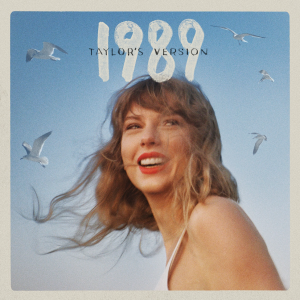 1989 (Taylor’s Version): The Story, the Significance, and the Swift Impact
1989 (Taylor’s Version): The Story, the Significance, and the Swift Impact
When Taylor Swift announced that she was re-recording her iconic 2014 pop masterpiece 1989, fans around the world erupted with excitement. The original 1989 marked a defining moment in her career — the era when she fully embraced synth-pop, shed her country roots, and became an unstoppable global phenomenon. It was also the album that gave us timeless hits like “Shake It Off,” “Blank Space,” “Style,” and “Wildest Dreams.” Now, nearly a decade later, 1989 (Taylor’s Version) is more than just a nostalgic reimagining of a beloved record. It’s a statement of ownership, artistry, and resilience.
The Journey to Reclaiming Her Work
To understand why 1989 (Taylor’s Version) exists, you have to rewind to one of the most publicized disputes in the music industry. In 2019, Taylor Swift revealed that the master recordings of her first six albums had been sold without her consent. The deal, which involved music executive Scooter Braun and Big Machine Label Group, meant that Swift no longer had control over the original recordings she poured her heart into creating.
Instead of accepting this loss, Swift took an unprecedented path: she decided to re-record her old albums so she could own the masters herself. This bold move not only gave her the ability to license her own versions of the songs but also set an example for artists worldwide about the importance of ownership in an industry that often leaves creators powerless.
The Original 1989: A Pop Culture Milestone
When 1989 first dropped in October 2014, it was more than just an album release — it was a cultural event. Named after her birth year, the album symbolized a personal and professional rebirth. Taylor shed the last remnants of her Nashville country image and fully stepped into the pop arena, armed with big hooks, polished production, and a newfound confidence in her storytelling.
The record broke sales records, winning Album of the Year at the Grammys, and spawned a stadium-sized world tour that remains one of her most beloved concert eras. But what made 1989 special was its blend of infectious pop melodies and deeply personal lyrics. Behind the glittering choruses were narratives about love, loss, and the bittersweet transition into adulthood.
Re-recording the Magic
For 1989 (Taylor’s Version), the challenge wasn’t just to recreate the songs — it was to breathe new life into them while keeping their essence intact. Swift and her production team meticulously studied the original arrangements, vocals, and instrumentation. The goal was to make them feel instantly recognizable to fans but polished with her matured voice and evolved production sensibilities.
Listening to 1989 (Taylor’s Version) is like looking at an old photograph that’s been restored with high definition — every detail is clearer, every note crisper, and every emotion just as potent as it was years ago. Her vocals carry more warmth and control now, but the playful charm of songs like “Welcome to New York” and “Shake It Off” is still there.
The Vault Tracks: Hidden Treasures Unveiled
Perhaps the most thrilling part of Taylor’s re-recording projects has been the addition of “From the Vault” tracks — songs written during the original album’s era but left off the final tracklist. These vault tracks for 1989 (Taylor’s Version) offer fans a glimpse into the creative process of her pop transition, revealing more about her mindset, her relationships, and her experiments with sound at the time.
These songs are not just bonus content; they’re like opening a time capsule from 2014 and discovering letters you never sent but still hold deep meaning. They expand the world of 1989, making it feel both familiar and brand-new.
More Than Music: A Power Move in the Industry
Taylor’s decision to reclaim 1989 isn’t just a personal victory — it’s a seismic moment in the music business. Artists have long struggled with contracts that strip them of their master recordings, but few have had the influence and platform to do something about it. Swift’s re-recordings have proven commercially successful, with fans eagerly supporting “Taylor’s Versions” over the originals. This sends a clear message: ownership matters, and fans will stand by artists fighting for their rights.
In doing this, she has opened up conversations in boardrooms, law schools, and recording studios about fairer deals for musicians. Her strategy has also changed the way labels think about long-term control of catalogues, potentially reshaping industry norms for decades to come.
The Emotional Impact on Fans
For Swifties, 1989 (Taylor’s Version) is more than just an album drop — it’s a homecoming. Many fans who first discovered Taylor through the original 1989 have grown alongside her. The re-recording feels like meeting an old friend who’s wiser now but still remembers every inside joke you shared.
Hearing the same songs with a slightly different vocal texture brings a bittersweet feeling — a reminder of how time changes us, yet some things remain constant. It’s a sonic bridge between who Taylor was in 2014 and who she is in 2025.
The Album Cover: A Breath of Freedom
The cover of 1989 (Taylor’s Version) is an artwork in itself. Against a soft blue sky, Taylor smiles brightly as seagulls soar around her. Her hair is wind-tossed, her red lips vivid, and her gaze slightly off-camera — a candid, joyful expression that feels unposed. This imagery captures the essence of the album’s themes: freedom, self-discovery, and embracing the future while cherishing the past.
The shift from the original 1989 cover, which featured a cropped Polaroid-style image with muted tones, to this more vibrant, unfiltered shot is symbolic. It reflects the clarity she now has over her music and her story.
A Legacy That Keeps Growing
With the release of 1989 (Taylor’s Version), Taylor Swift has once again proven that her artistry is matched only by her business acumen. She’s not just revisiting her past; she’s rewriting it on her own terms. Each re-recorded album strengthens her legacy, not only as a songwriter and performer but as a trailblazer who challenged the system — and won.
Years from now, when future artists negotiate their contracts with better protections, they may have Taylor Swift’s bold re-recording project to thank. And fans will remember 1989 (Taylor’s Version) not just for its infectious choruses, but for the courage and conviction it represents.
Conclusion
1989 (Taylor’s Version) is a triumphant return to one of pop’s most beloved eras, but it’s also a revolutionary act in the music industry. It celebrates the past while securing the future, blending nostalgia with newfound freedom. For listeners, it’s a reminder that the stories and songs we love can be revisited, reimagined, and reclaimed — and that sometimes, the best way to honor your history is to take it back into your own hands.
In the end, the seagulls on the cover aren’t just a whimsical touch — they’re a metaphor for Taylor herself: soaring freely, unbound, and in full command of her own sky.




